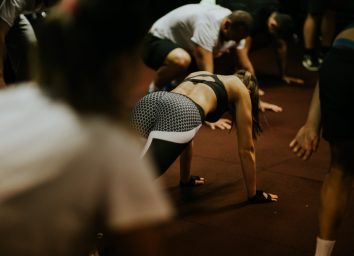
Elite athletes – like Jakob Ingebrigtsen, who won gold for the men’s 1500m race at the Tokyo 2020 Olympics – train almost ten to 14 times per week, clocking up numerous hours on the track and in the gym. But for the rest of us, getting into shape does not necessarily mean such an arduous regime.
How often you should train depends on a lot of different factors – such as your training goals, the intensity of your exercise and any history of injury you may have. The type of training you do can also determine how often you need to exercise.
Exercise stresses different systems in our body. This stress causes fatigue, but also leads to “adaptations” (improvements) specific to the stress we’ve experienced. For example, while resistance training (such as weight lifting) helps us build muscular strength, it’s less likely to improve our cardiovascular fitness because it puts more stress on our skeletal muscles than it does our heart.
But improvements only happen with a combination of recovery and repetition. If we don’t repeat the training stress, improvements will be lost. We also need to give our body enough time – but not too much time – between training sessions to recover and “adapt”. In short, the key to improving fitness is to train consistently, which means striking a balance between exercising and recovering enough.
To complicate matters, some body systems take longer to recover than others. For example, exercise that stresses the body’s nervous system – such as sprinting, high-intensity interval training, or very heavy resistance training – will take longer to recover from than a lower-intensity session – such as a gentle jog that primarily stresses the heart and lungs. This means that depending on what type of training you do, you may need to exercise more or less than you think.
Endurance exercise
When training for endurance events, doing regular, low-intensity workouts are useful. Regularly training at this intensity helps the body use oxygen more effectively, and over time makes it easier to exercise at the same intensity. In fact, successful endurance runners tend to perform most (about 80% of their training) at low intensities, with higher-intensity sessions planned carefully – often two to three times per week, with a minimum of 48 hours between them. This also helps athletes recover better and avoid injury between training sessions.
Skill-based sports
Many sports, including swimming, tennis and martial arts, require combinations of physical and technical skill. While more research is needed in this area, it’s generally thought that consistent and purposeful practice improves performance for these types of sports.
For example, swim coaches value high-volume, low-intensity training (focusing on technique) to enable their swimmers to move more efficiently and easily through the water. But when we do the same type of training repeatedly, overuse injuries can happen, so it might be best to vary the training stress to help the body recover – so balance intense days with easier training days and recovery days.
High-intensity activities (such as sprinting or practicing a tennis serve) can change the central and peripheral nervous systems – both thought to be important for improving skill. But these activities can only be maintained for a short period at the required intensity – so to avoid injury, it’s important to only do a little each training session, but practice consistently over time.
In short, training “smarter” not harder is key in both endurance sports and skill-based sports.
Resistance training
When it comes to building muscle, doing more training sessions a week results in greater gains in muscular strength. This is probably because more training volume leads to greater increases in both muscle size and strength. But rest and recovery (including proper nutrition) are still crucial in helping muscles increase in size.
Generally, it’s recommended that muscle-strengthening exercises are performed on two or more days per week to improve muscle and bone health. If increasing muscle size is your goal, working different muscle groups on different days can help ensure you are still challenging your muscles enough to build strength, while giving yourself enough time to recover between workouts.
But while performing more days of resistance training is beneficial, even just one day per week is effective in improving strength. Whole body movements, such as squats and lunges, performed with correct technique, can be great for developing strength. It’s also worth noting that exercising at your absolute maximum until you can’t lift any more repetitions on a given exercise – known as lifting to failure – provides no additional benefits for improving strength. Indeed, it may be more beneficial for building strength to leave a little bit in reserve.
Health and fitness
For the average person trying to get in shape, the most important thing isn’t necessarily how much exercise you do, but the quality of that exercise.
For example, high-intensity interval training (HIIT) show promise for improving fitness and health. This involves performing exercises at maximum effort for a short period of time, followed by a period of rest. A recent study showed doing four to seven bouts of intense, one-minute exercises with 75 seconds of rest between three times a week improved fitness and mental wellbeing. So for people who don’t regularly exercise, less than 30 minutes per week could be beneficial.
Whether you should exercise more or less often depends on many things – including how often you’re able, your training goals and the intensity of the exercise you’re doing. We recommended trying to vary the kind of training you do within a week, and allow enough recovery between intense or resistance training days – including at least one recovery day a week. But overall, the most effective training program is the one that you maintain consistently over a long period of time.![]()
Matthew Wright, Lecturer in Biomechanics and Strength and Conditioning, Teesside University and Jonathan Taylor, Lecturer in Sport and Exercise, Teesside University
This article is republished from The Conversation under a Creative Commons license. Read the original article.








